Gravel bikes are currently very popular, but many MTBers are still sceptical. Quite honestly, we felt the same way at first, but now we sometimes find ourselves spending entire weekends on drop bar bikes. We put together five reasons why gravel grinding isn’t as bad as you might have thought.

Gravel bikes are the link between mountain bikes and road bikes. From the MTBers point of view, they are often simply road bikes with knobbly tires or retro hardtails with drop bars. But there are also some other differences: the tires and handlebars are wider, the geometry allows for smoother riding and the seating position is usually more comfortable. Currently, gravel bikes are mainly popular with roadies who also want to clock up their kilometres away from busy roads. But gravelling is becoming more versatile and at the same time more extreme, making it more appealing to mountain bikers too. New bikes with suspension elements and droppers are coming onto the market, called “Gravelduro” or “Gravity-Gravel”. The lines between mountain and gravel bikes are becoming more and more blurred, and pure mountain bike manufacturers are suddenly bringing gravel bikes to the market, like YT with their new SZEPTER. Bikes like the 3T Exploro Ultra or RONDO RATT show that the bike industry has recognised the rising interest in gravel riding among mountain bikers and roadies. We show you what made us as hardcore mountain bikers reconsider gravelling.
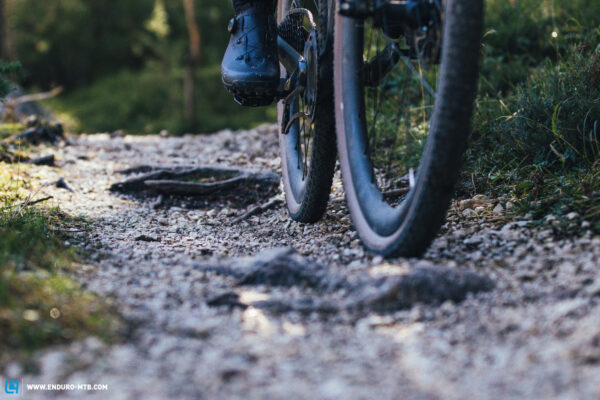

Gravel dries faster than mud
For many mountain bikers, winter means a significant reduction in biking time. The trails are muddy and after each session your bike, clothes and body have to be thoroughly cleaned, not to mention the quite significant differences in perceived temperature between uphill and downhill. Going up, you sweat like crazy under your five layers, only to be chilled to the bone on the way down. Considering that gravel roads and tarmac dry much faster than trails, a gravel bike makes particularly good sense for the winter season, allowing you to get in some much-needed bike time during the colder months. The more consistent speed and effort makes the choice of what and how much to wear a lot easier. But be aware: your hands need far more protection, as they are exposed to the full wind and usually suffer from poorer blood circulation than when mountain biking.
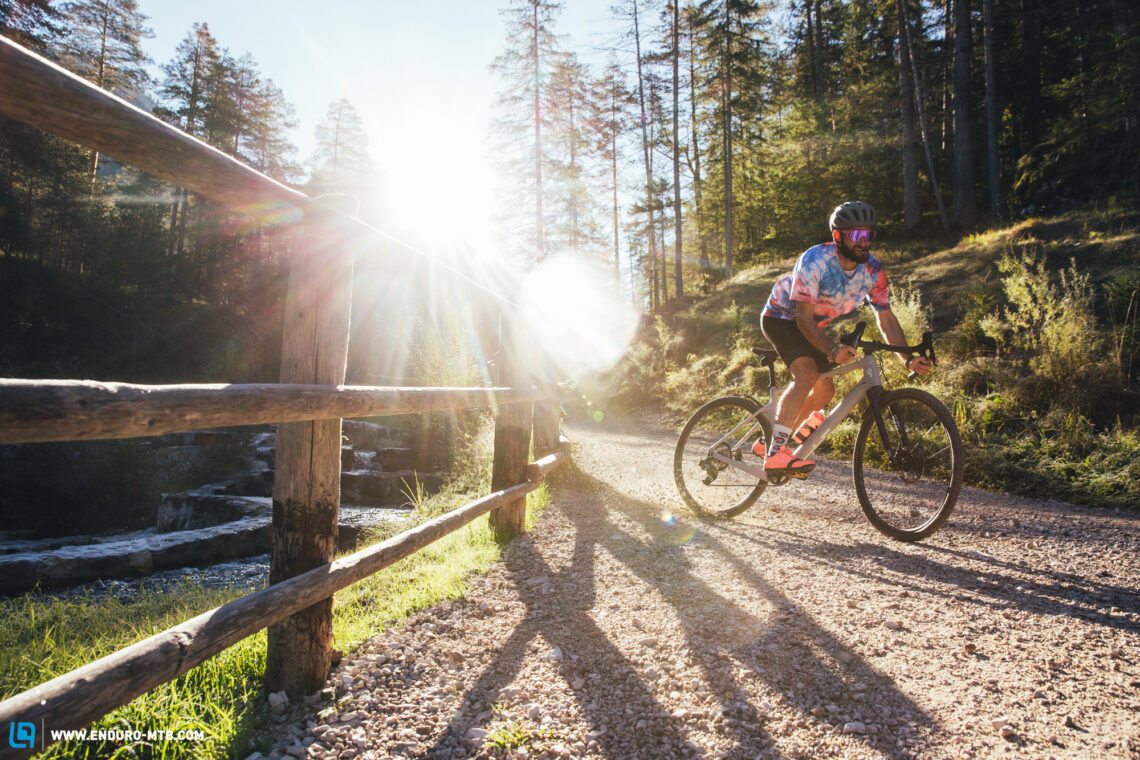
Gravel biking is underbiking on a new level
However, gravel bikes are not just for seasonal fun. Modern enduro bikes are now also a good fit for rough DH trails or the bike park. On the downside, however, less demanding trails quickly become unspectacular as a result.This means that home trails in particular can become a little bland for many who use their enduro as their go-to bike for everything – especially as home trails are usually not the wildest trails for most of us anyway. So it’s no wonder that underbiking is becoming increasingly popular as a counter-trend to more and more capable bikes – in other words, riding bikes at their limits, on trails that are actually too tough for them. Gravel bikes are at the forefront of this trend and therefore a great addition to your bike fleet, making trails that have long been considered too boring a challenge once again. The lower, more aggressive riding position of the drop bars will take you out of your comfort zone and make easy trails seem fun again! Once you’ve got used to it a bit, you’ll be surprised how much you can do with these unsuspended bikes with their – relatively – narrow tires. Nevertheless, keep in mind that drop bar bikes will always be more road bike than mountain bike. Even cross-country hardtails, which are probably the category with the most pedalling efficiency among mountain bikes, are noticeably stronger off-road than gravel bikes. On the other hand, gravel bikes are the lightest and fastest of all the bikes designed for tackling different surfaces, thanks to their narrow tires and the drop bars.

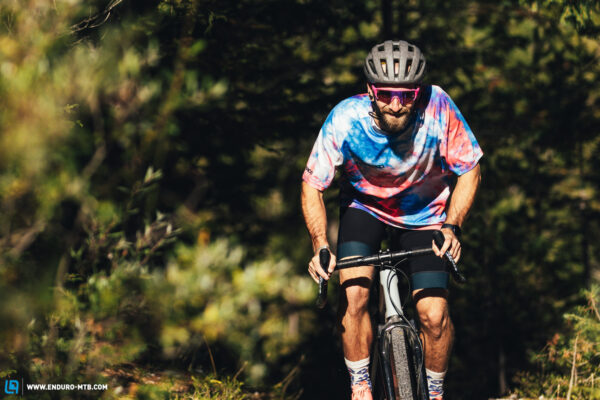
Gravel bikes are the better road bikes
If you fancy a bike for the road, you are usually better off with a gravel bike than a race bike. Whether you want the bike as a training tool for your fitness or to get more bike time without having to rely on trails, gravel bikes are your first choice here. Unless you want to squeeze out the last ounce of efficiency, they simply make more sense than race bikes. For one thing, gravel bikes generally have a lower saddle–bar drop – how much higher the saddle is than the handlebar – giving a more upright, comfortable riding position, with a small aerodynamic penalty. Their field of application is also significantly larger. The wider tires notably improve the vibration damping on gravel roads – as on uneven asphalt roads – while the frames and forks are also designed to smooth the ride and handle rougher surfaces. Your wrists and your back will thank you ;). You also have a lot more freedom when planning your route: with a gravel bike, you can simply set off without having to worry about the state of the roads, allowing you to go on a discovery tour on your own doorstep. After all, how well do you really know your home turf? Many cool places you just don’t get to because they are simply too far to go to on a mountain bike, and too rough for a road bike. But where does this dirt road behind the abandoned industrial site lead to? What actually lies at the end of this little valley? With the gravel bike you can explore it all. It’s not about maximum performance or efficiency – as is often the case with road biking – but simply about having fun. When gravelling, no one gets weird looks because of the height of their socks or the length of their stem.
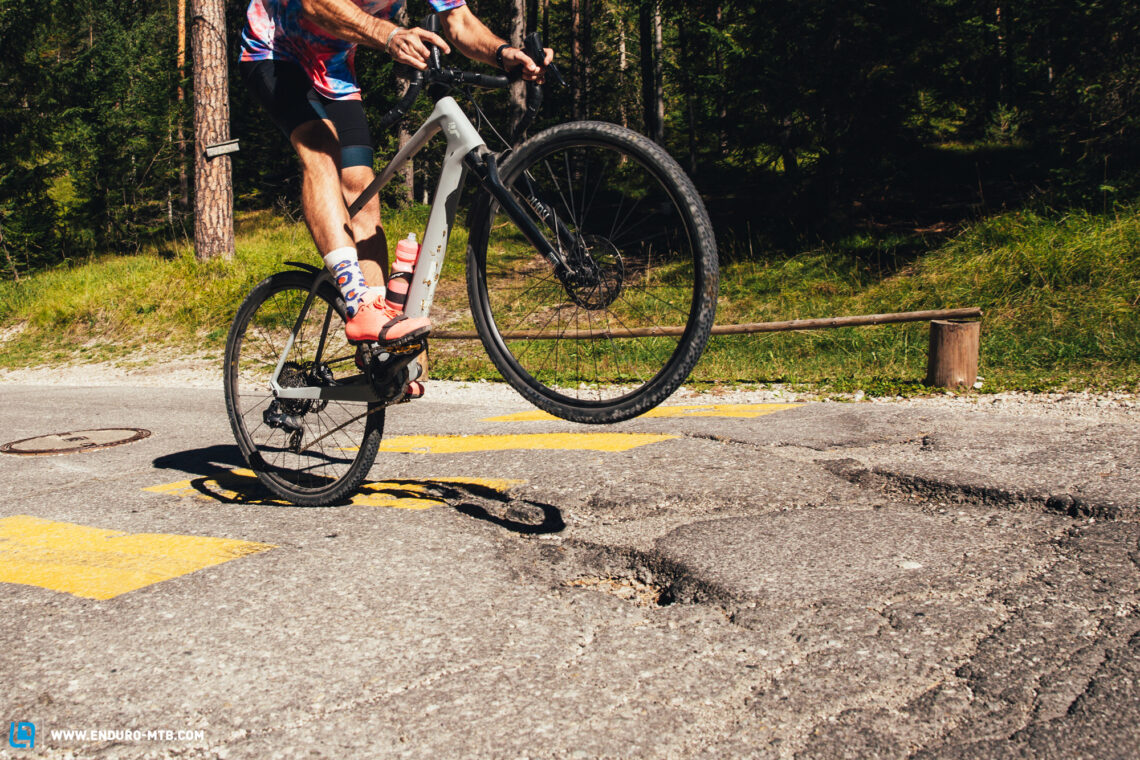
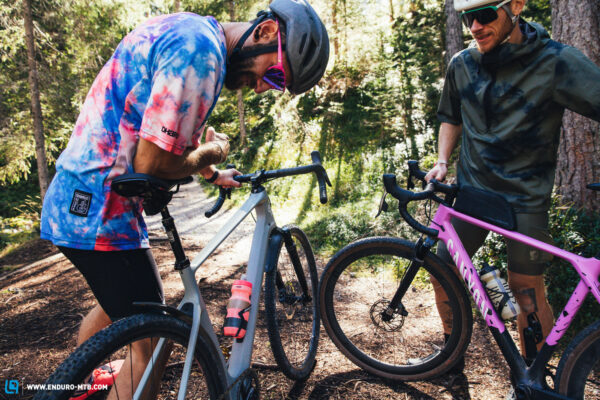
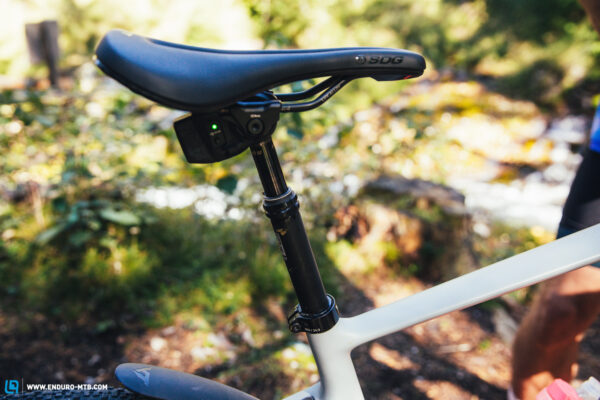
Gravel bikes are very versatile
Gravel bikes are more versatile than any other bike. Whether you’re heading out for a quick fun ride, a bikepacking adventure, an exploration tour or a round of single trails, the gravel bike can do it all. This does not mean, however, that all gravel bikes are the same. Naturally there are different focuses and you should be clear about what the primary use of your bike is going to be. Even though gravel race bikes may look sleek and fast, there are certainly better frames for long tours or overnighters. Gravel race bikes offer low rolling resistance, minimal weight, and a sporty riding position with direct, sharp handling. This means they are very close to the classic road bike, delivering maximum efficiency on the gravel, while comfort and all-round practicality come secondary. Backroad-gravel bikes are the next step towards off-road. They are well suited for a mix of asphalt, gravel and forest trails. However, they are still not the best choice for trails. That’s where adventure-gravel bikes come into play. They are designed more for off-road, offering attachment points for luggage and usually a wider handlebar for more safety on rough terrain. Gravity-gravel bikes are also relatively new. Their geometry is very close to that of mountain bikes and they often come with a dropper post and suspension elements. Of all the gravel bikes, they are the safest on more technical trails, but still much more efficient on gravel or asphalt than mountain bikes.

Cycling is fun – no matter the bike
And finally, of course, it has to be said: no matter how funky the bike category may sound – from down-country to gravelduro to off-road aero-gravel – in the end, they’re all bikes. And biking is fun. You get out into the fresh air, pedal your head clear and leave the daily grind behind. Bikes help us to push our comfort zone and live adventures. At the end of the day, it’s not what you ride, it’s how you ride. Have fun and don’t worry too much about what others think of it. Gravel bikes are simply another way to experience freedom on two wheels and enjoy life.
MTBers are often very wary of new things – eMTBs, dropper posts and 29ers have clearly shown this. But you can’t deny it: gravel bikes are fun. It’s a big field with something for everyone, whether it’s a road bike replacement, fitness tool or adventure bike. Even though we were sceptical ourselves at first, we found that in order to discover what you actually like, you really have to try it for yourself.
Did you enjoy this article? If so, we would be stoked if you decide to support us with a monthly contribution. By becoming a supporter of ENDURO, you will help secure a sustainable future for high-quality mountain bike journalism. Click here to learn more.
Words: Simon Kohler Photos: Peter Walker









